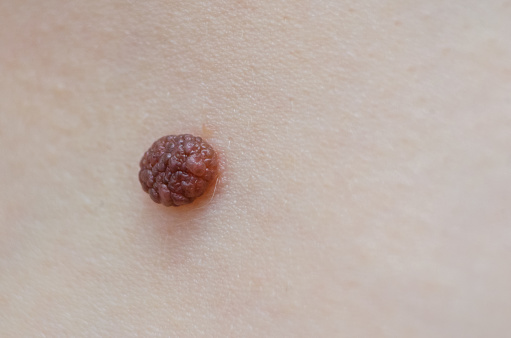Moles and skin lesions can change over time, and these changes might signal significant health issues. Keeping an eye on them is crucial for maintaining healthy skin. Mole and skin lesion monitoring plays a key role in recognizing these changes early, helping to prevent serious issues like skin cancer. According to some studies, early detection of these changes increases the chances of effective treatment. This guide will teach you how to monitor skin lesions effectively, equipping you with the skills for thorough self-checks right at home.

Understanding Moles and Skin Lesions: Types and Health Implications
Moles and skin lesions are spots or marks on your skin. Moles are generally brown or black, while lesions can have various appearances. Some are natural and harmless, but others can pose health risks. Recognizing the differences is vital. Harmless moles tend to remain unchanged, but some lesions might hint at skin problems when they grow, change in color, or become itchy. Regular mole and skin lesion monitoring helps detect these changes early, potentially preventing more serious outcomes.
Mastering the ABCDEs of Mole Evaluation
The ABCDE method makes checking moles and lesions easy:
Asymmetry: One half is unlike the other.
Border: Edges may be uneven or blurred.
Color: Varies from one spot to another.
Diameter: Larger than a pencil eraser.
Evolving: Changes in size, shape, or color over time.
Use these simple steps to regularly check skin markings. If you notice changes, consider a professional check-up as soon as possible.
The Noticeable ‘Ugly Duckling’ Sign: A Key to Early Detection
The ‘ugly duckling’ sign refers to a mole or lesion that looks different from others on your body. This could be an early hint of melanoma, a type of skin cancer. When you do mole and skin lesion monitoring, look for these unique marks. If you find any ‘ugly ducklings,’ it’s essential to talk to a doctor early to rule out any serious issues.
Comprehensive Monthly Skin Self-Examination Steps
Performing a self-exam is easier with some regularity. A routine might be:
1. Gather your tools: Use a mirror, magnifying glass, and good lighting.
2. Start at the top: Begin with your scalp and face, moving downwards.
3. Check your entire body: Don’t forget your back and the back of your legs.
4. Create a skin journal: Write down any notable changes.
5. Commonly missed spots: Check under your arms, soles of your feet, and between fingers.
By following these steps, you cover most parts of your body, ensuring nothing gets overlooked.
When to Consult a Dermatologist
When you notice anything unusual, it’s wise to see a doctor.
Key warnings include: – Moles that change fast. – Bleeding or inflamed spots. – Persistent itching or pain.
If any of these symptoms appear, consult a dermatologist immediately. A visit to Aira Skin and Derma Clinic can prepare you for professional skin checks, offering expertise in assessing your skin’s health. The clinic provides advanced interventions for effective mole and skin lesion monitoring.
Promoting Skin Health and Prevention at Aira Skin and Derma Clinic
Aira Skin and Derma Clinic in India emphasizes preventive care to maintain skin health. By visiting, you gain access to: – Lifestyle tips: Recommendations for a skin-friendly diet and hydration routines. – Daily care advice: Use sunscreen, moisturizers, and gentle cleaning products daily. – Advanced Technology: Employing the latest devices allows accurate mole and skin lesion monitoring. – Non-invasive techniques: Effective treatments for lesions and moles that require minimal downtime.
Partnering with the clinic means opting for a path to healthy skin confidence. By leveraging top-tier technology and professional expertise, Aira ensures your skin remains in the best condition possible.

